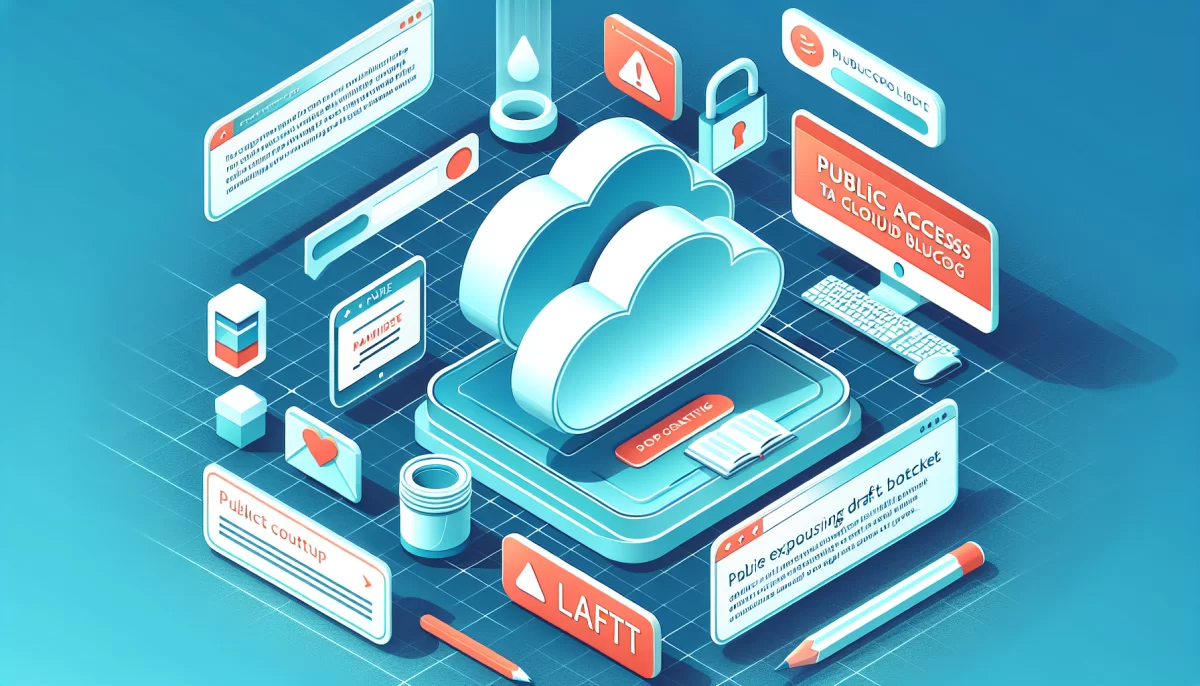Public Access to Google Cloud Blog Image Bucket Exposes Draft Content
Google maintains several official blogs, including blog.google, firebase.googleblog.com, and cloud.google.com/blog. While many of these blogs are hosted on Blogspot.com and use its Content Delivery Network (CDN) to serve images, notable exceptions like the The Keyword (blog.google) and the Google Cloud Blog operate on custom platforms.
Understanding Google Cloud Storage Buckets for Blog Images
Images for these custom Google blogs are stored on Google Cloud Storage buckets, which are Internet-accessible file storage services provided under Google’s Infrastructure as a Service (IaaS) offering. The specific buckets used include:
https://storage.googleapis.com/gweb-uniblog-publish-prod/https://storage.googleapis.com/gweb-cloudblog-publish/
These buckets facilitate direct URL-based access to stored images, permitting browsers or applications to fetch or list stored content when appropriate permissions are granted.
How to Access Google Cloud Storage Buckets
There are multiple URL patterns to access Google Cloud Storage buckets. They include:
https://storage.googleapis.com/<bucket-name>/https://<bucket-name>.storage.googleapis.com/https://storage.cloud.google.com/<bucket-name>/https://sandbox.google.com/storage/<bucket-name>/
Appending file names to these URLs allows direct access to specific objects within the bucket, subject to the bucket’s access permissions.
The Keyword Blog: Restricted Bucket Listing
Attempting to access gweb-uniblog-publish-prod bucket in a browser results in an Access Denied error:
<?xml version="1.0" encoding="UTF-8"?>
<Error>
<Code>AccessDenied</Code>
<Message>Access denied.</Message>
<Details>Anonymous caller does not have storage.objects.list access to the Google Cloud Storage bucket.</Details>
</Error>This behavior occurs because public listing of objects in the bucket is disabled, adhering to best security practices by default.
Google Cloud Blog: Publicly Accessible Image Bucket
In contrast, the second bucket gweb-cloudblog-publish was found to publicly list all uploaded items. Accessing its root URL returned an XML listing of thousands of files, revealing detailed metadata for each object, including names, sizes, and modification dates.
<?xml version="1.0" encoding="UTF-8"?>
<ListBucketResult xmlns="http://doc.s3.amazonaws.com/2006-03-01">
<Name>gweb-cloudblog-publish</Name>
<Contents>
<Key>images/sample-image-1.jpg</Key>
<Size>123456</Size>
<LastModified>2023-09-01T12:00:00.000Z</LastModified>
</Contents>
...
</ListBucketResult>This unauthorized public access was possible because Storage Object Viewer permissions (roles/storage.objectViewer) were granted to allUsers. This role permits anyone to view object contents and metadata as well as list objects within the bucket.
Storage Object Viewer role
Allows reading object data and metadata, including the ability to list objects in a bucket, without granting modification rights.
Implications of Public Bucket Exposure
The public exposure of the gweb-cloudblog-publish bucket meant all uploaded images were accessible — including assets meant for upcoming, unpublished blog posts. This presents several risks:
- Confidentiality Breach: Early access to marketing materials, screenshots, or product imagery for unreleased Google Cloud products or features.
- Competitive Risk: Competitors could gain insights into Google’s future cloud service launches, impairing competitive advantage.
- Reputational Impact: Leakage of premature content could lead to loss of customer trust or misinformation.
Such security lapses in cloud storage configurations are not isolated. A 2023 report by IBM Security revealed that misconfigured cloud storage buckets accounted for over 20% of data breaches worldwide, highlighting the critical need for strict access controls.
Timeline of Incident Resolution
| Date | Action |
|---|---|
| April 10, 2019 | Vulnerability reported and assigned Priority 2. |
| April 10, 2019 | Initial investigation commenced. |
| April 12, 2019 | Bug officially filed to track resolution. |
| April 16, 2019 | Bug bounty reward issued. |
| April 24, 2019 | Issue marked as fixed, public listing disabled. |
Best Practices for Cloud Storage Security
To prevent similar vulnerabilities, organizations should adhere to the following cloud storage security best practices:
- Principle of Least Privilege: Grant the minimal required permissions to users and services.
- Regular Audits: Conduct periodic access reviews and bucket permission audits.
- Use Bucket Policies: Define bucket policies that restrict public viewing or listing unless specifically required.
- Enable Logging: Monitor and log access to buckets to detect unauthorized activity.
- Leverage Cloud Security Tools: Utilize cloud provider tools, such as Google Cloud’s Security Command Center or AWS Trusted Advisor, to identify risks.
According to a 2022 Gartner study, organizations that adopt automated cloud security posture management tools reduce misconfiguration risks by over 60%.
Conclusion
The public exposure of the Google Cloud Blog’s image bucket underscores the complexities and risks of managing cloud storage permissions correctly. Even global technology leaders like Google can experience misconfiguration issues that potentially leak sensitive information.
With the increasing reliance on cloud infrastructure — dominating over 94% of enterprises worldwide (Flexera 2024 State of the Cloud Report) — strict governance and continuous monitoring of cloud storage permissions are vital to safeguarding corporate and customer data.



